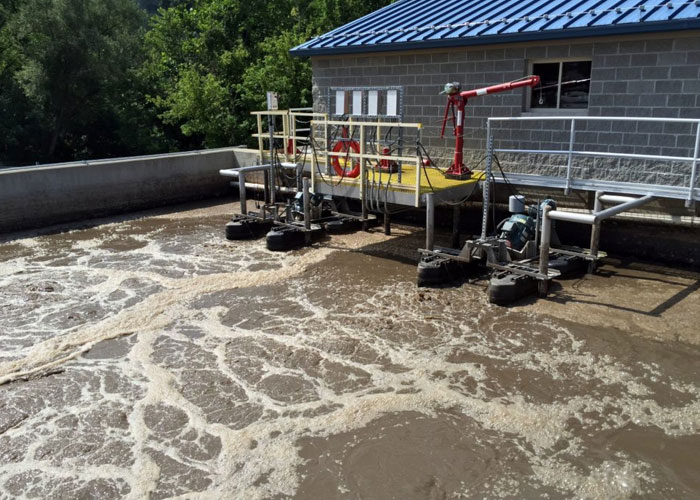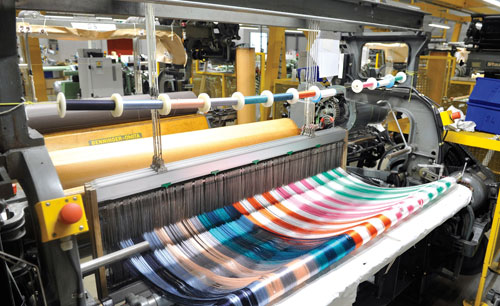Textile wastewater treatment processes typically involve several chemical reactions and are multi-step processes involving large organic molecules. Choo et al. studied the reactions and concluded that there are four main types: coagulation-flocculation, ozonation, and photocatalytic treatment.
Depending on the location of your home, you might have to purchase an STP to handle your sewage. Generally, residential buildings need at least one STP to treat sewage. Many STPs are located underground, making them difficult to maintain. Moreover, you may not be able to inspect them without hiring an expert. It is better to consult a professional if you have any doubts about the process.
Activated sludge
Activated sludge is derived from the biological treatment of wastewater produced in the textile manufacturing industry. The process is non-toxic, environmentally friendly, and cost-effective. The sequencing batch reactor is a powerful activated sludge treatment method that combines high flexibility and simple operation.
The sludge treatment process involves mixing wastewater and biological mass, known as mixed liquor. This wastewater is discharged into a settling tank, and the treated supernatant is run off for further treatment. A portion of the settled material is returned to the head of the aeration system as return-activated sludge.

Activated sludge is primarily used to treat textile waste. This wastewater contains non-biodegradable chemical polymers, making conventional wastewater treatment methods ineffective. In a sludge digester, the watery residue from the primary sedimentation and humus tank undergoes slow fermentation by anaerobic bacteria. The process requires a controlled temperature of 35oC and a pH of 7-8. The anaerobic bacteria break down the sludge's constituents and produce CH4, a natural gas.

Coagulation-flocculation
Textile wastewater treatment involves the use of chemical substances and other materials that break down the waste matter in textile wastewater. These materials include coagulants, flocculants, and adsorbents. New materials are being developed constantly to achieve the best results and provide cost-effective treatments for textile wastewater.
Textile effluents include dyes, pigments, chemicals, and heavy metals. Treatment of this wastewater is best achieved by using coagulants with high valence. This process has the additional benefit of reducing the volume of wastewater.
Chemical coagulants commonly used for wastewater treatment include ferric chloride and aluminum sulfate. However, the toxicity of aluminum sulfate and other aluminum-based coagulants has led to a move toward the development of biodegradable polymers. Chitosan is a biodegradable polymer obtained by the deacetylation of chitin.
Textile wastewater is a complex mixture of chemical compounds and organic materials that must be treated before discharge. Moreover, it requires a considerable amount of energy for treatment. Moreover, wastewater treatment produces sludge, which is hazardous and must be disposed of properly. The industry is facing several environmental challenges that must be addressed. To improve the environment and reduce water and energy usage, textile production organizations must look into developing more efficient, environmentally friendly technologies for wastewater treatment. These technologies can not only reduce the amount of effluent but will also improve its quality.
Chemical oxidation
There are various processes for the treatment of textile wastewater. These processes have been developed to remove recalcitrant organic materials from wastewater. Some of these processes are based on the production of highly reactive radicals. They can be applied under solar radiation and degrade highly recalcitrant organic materials in textile wastewater.
Textile wastewater has many impurities and needs to be treated before it can be discharged. This treatment process consumes large amounts of energy and produces sludge, a hazardous waste. To deal with this waste, textile manufacturing facilities must build wastewater treatment plants. Other methods of wastewater treatment include recycling and process control. The water consumed in textile manufacturing is one of the most significant environmental issues. To address these problems, textile production organizations need to develop more efficient and environment-friendly technologies for wastewater treatment. This way, they can reduce the amount of water they need and improve the quality of the effluent discharged.
Textile wastewater contains high concentrations of suspended and colloidal solids, salts, and heavy metals. The wastewater also has a complex structure and high emissions, making multiple treatment processes necessary. Membrane systems are an effective solution for separating different impurities in textile wastewater.
Photocatalytic treatment
Wastewater produced by the textile industry is a major source of pollutants. The most common contaminants are organic dye, which is released into the environment during the dyeing process. More than 100,000 different dyes are used in the textile industry. The oldest of these dyes is indigo carmine, which is a very toxic chemical. Many of these dyes are resistant to biodegradation and require photocatalytic degradation to remove them.
Textile wastewater is highly polluted and contains different types of manmade dyes. These pollutants can damage aquatic life and adversely affect human health. For this reason, it is essential to treat textile wastewater before it is released into the environment. The main target of this project was to identify an effective method for the treatment of wastewater generated in the textile industry.
The TiO2-based PCO was evaluated for its decontamination capacity in textile wastewater produced from the dyeing process. In an experiment, it was used to remove a reactive dye called Reactive Blue 4 (RB4) from textile dye house effluent. It was shown to be more effective than PAC in removing RB4 from wastewater. This catalyst has a long-term capacity to remove dyes.







































Share Post